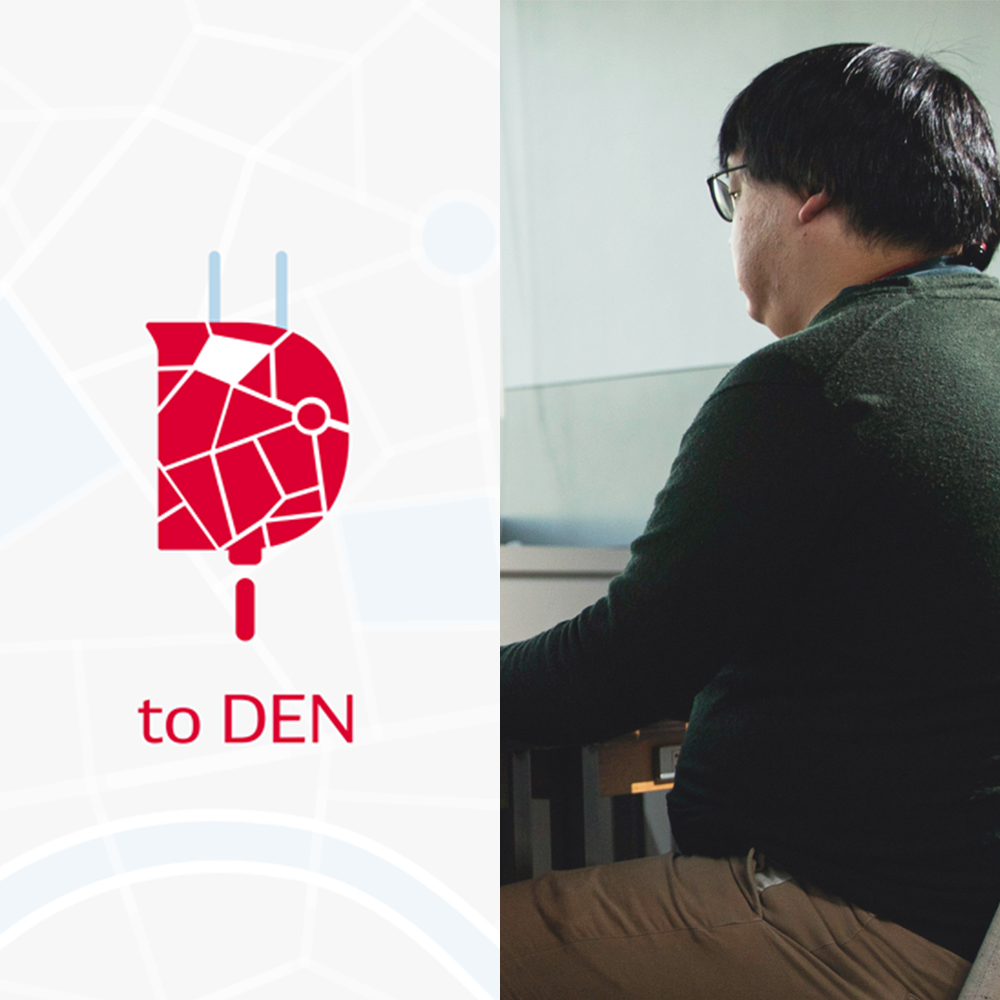Prototyping and AI2023.10.16
-
 Kohei
Kohei
Akiyama
-
Table of Contents:
Prototyping for Proof of Concept
Proof of Concept (commonly known as POC) and prototyping might sound like magic spells, but they are frequently used terms in design. Both are close in meaning to "trial production." POC refers to the verification of new experiential value, while prototyping refers to the functional trial production for that purpose.
The photo below shows a prototype made during a project for a taxi air purifier, where we could experiment with the location, size, and operation method of the control device. This can also be said to have functioned as a POC.
I often proceed with design using such methods, not so much because I want to confirm experiential value, but simply because I enjoy "just making" things. The charm of prototyping lies in creating something usable by any means necessary, and I hope to talk a little about that here.
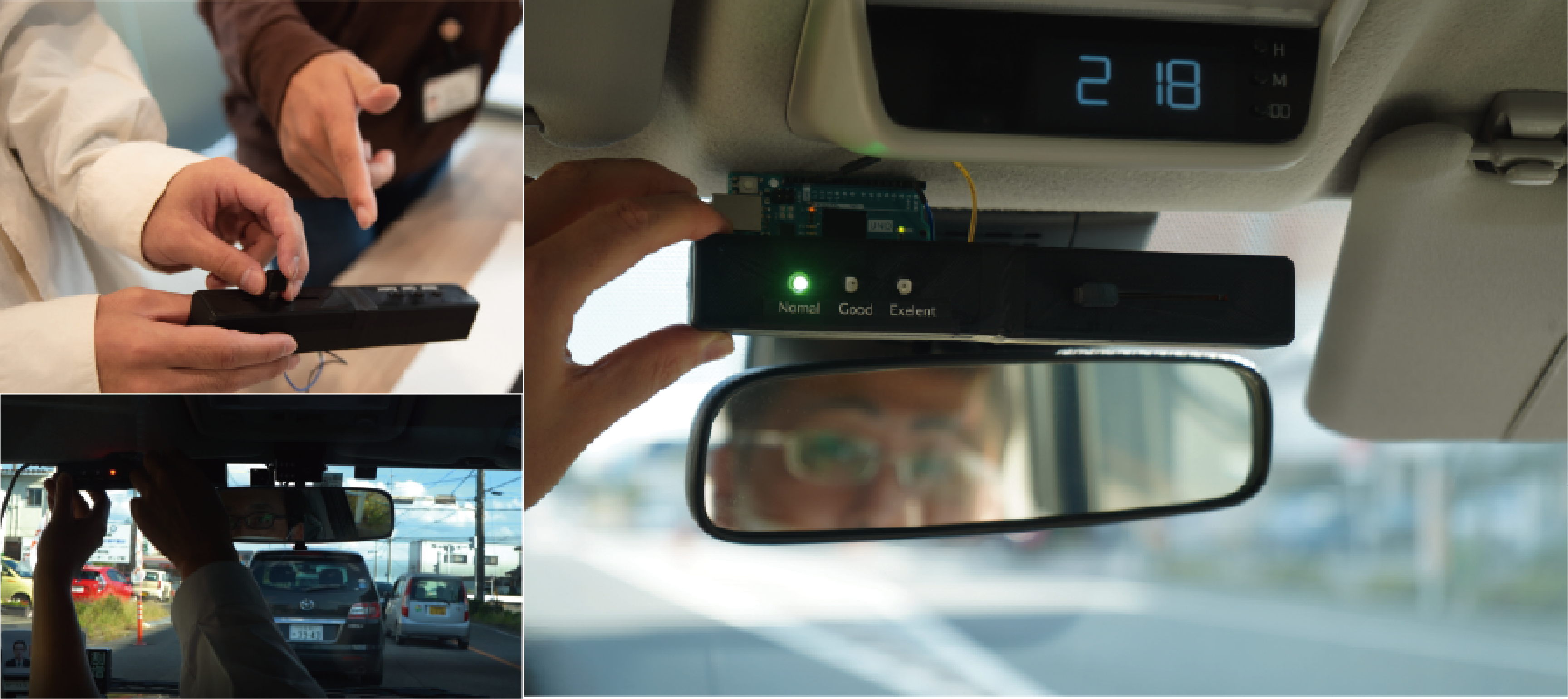
Creating a Chemical Exhibit
One day, I was asked to create a chemical exhibit expressing molecular movement. Taking the opportunity, I decided to undertake most of the project myself. Unlike usual design work, the goal here was not value verification but creating a durable and high-quality exhibit that could operate continuously. In other words, the task was to "make it perfect," and Iʼd like to share a particular discovery I made during this project.
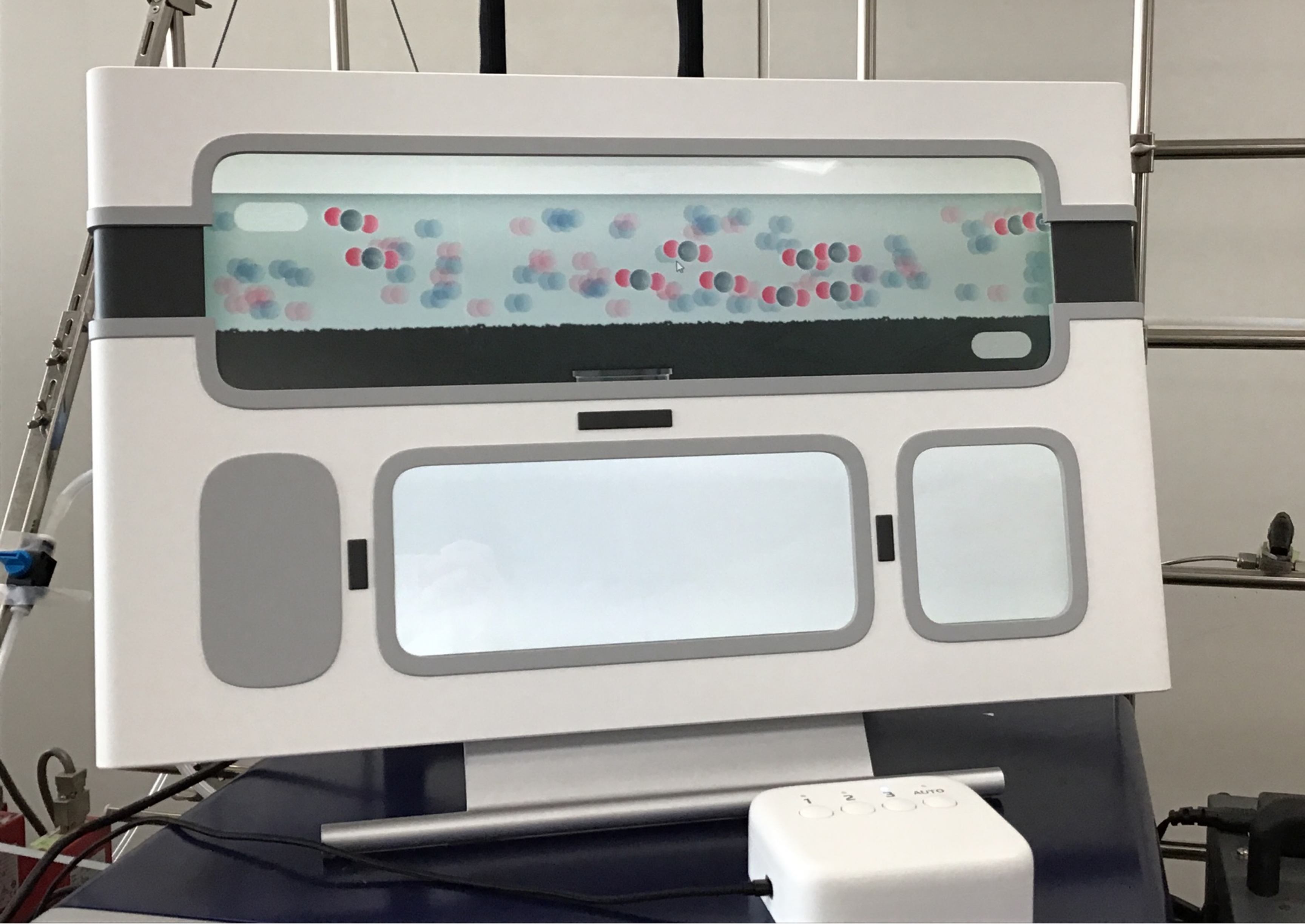
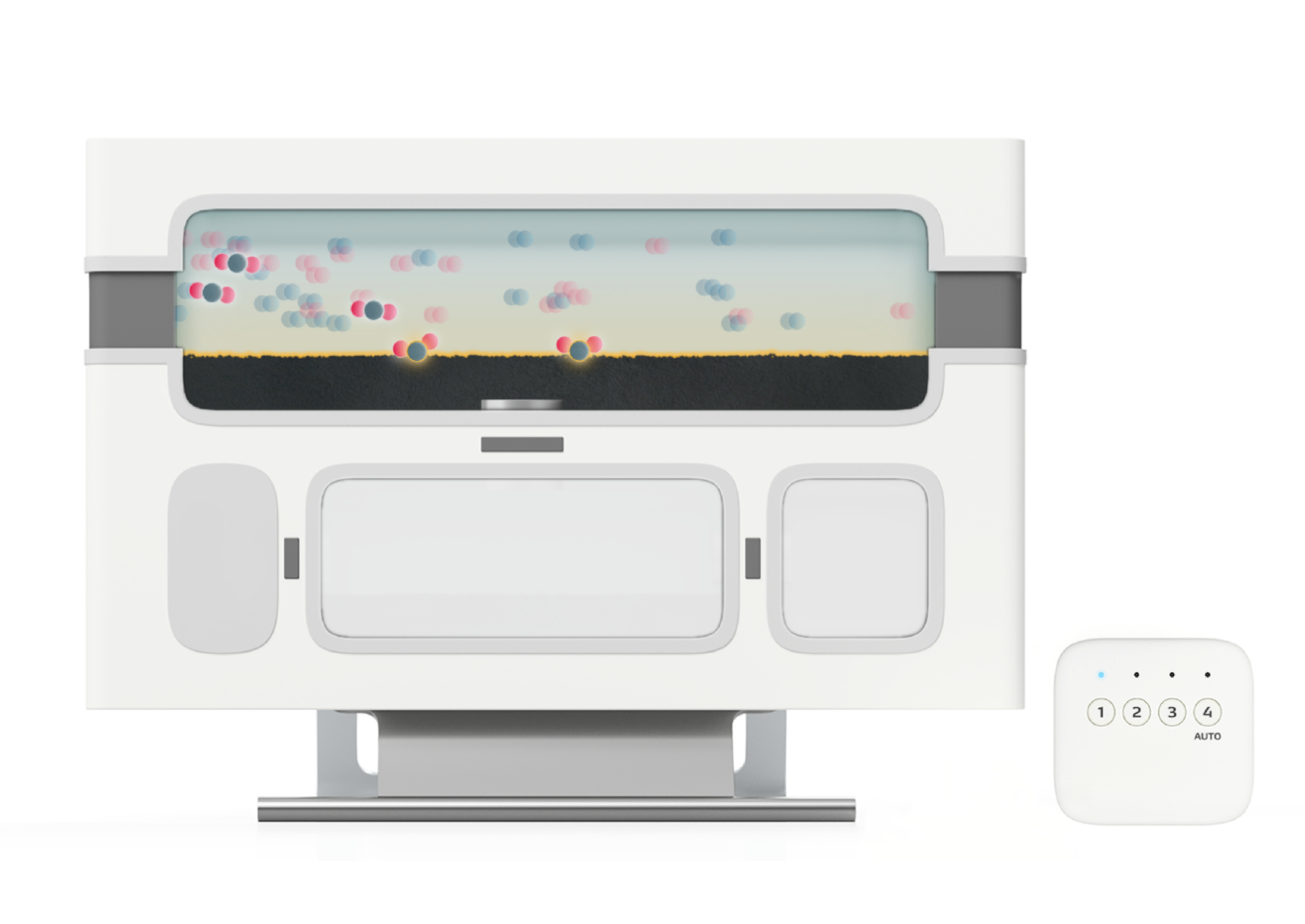
Prototyping Aiming for Perfection
This exhibit aimed to create a display where pressing a switch would show elemental reactions on a screen, like those found in science museums. The main required skills were UI design for the interface, electronics for interactive functions, and product design to create the mock-up casing. (This combination is generally how I always make prototypes.)
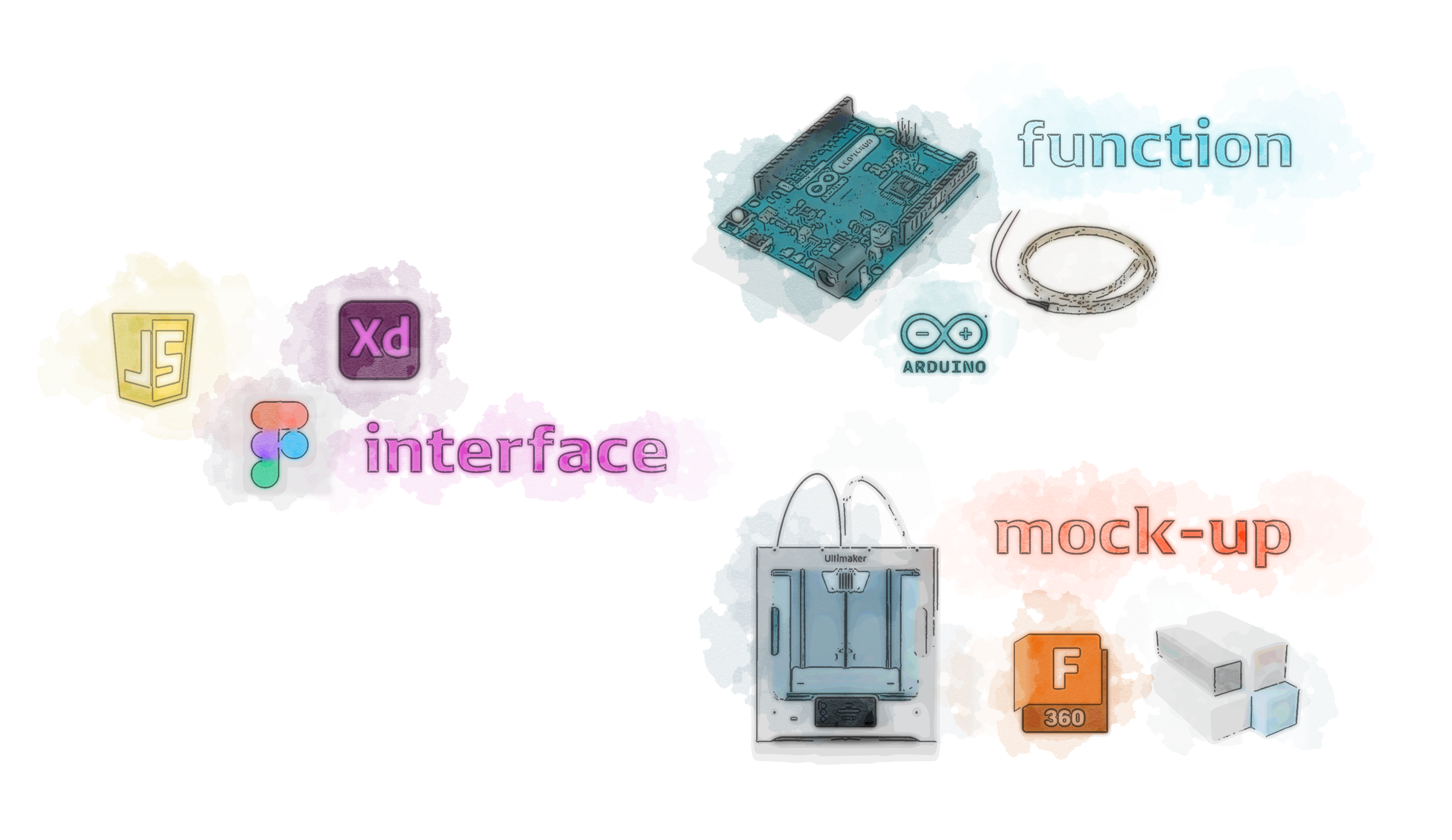
Usually, if it works for the actual event, I donʼt worry about fine-tuning and make do with about 70 points worth of quality, which is better for efficiency. However, this time, I had to create something that could operate continuously without any pretense, aiming for a perfect score, which was quite challenging. The initial stage of the elemental reaction program involved simply moving a circle, as shown below left, and the casing started from testing with Styrofoam attached to a PC.
The long and uncertain path to realization made for a very grueling period.

AI Creating and Connecting from 0 to 1
During this very tough period, I had to create and connect each necessary element one by one. Particularly challenging was the functional part, as interactive exhibits must be programmed to function. Lacking a background in information technology, creating programs from scratch and combining them took a lot of time (and often didnʼt go well). Since this was a prototype aiming for perfection, everything had to be flawless.
In such desperate times, I hesitantly asked AI for help, and it provided almost perfect answers, from the mathematical formulas of elemental behavior to Arduino programming. (The Arduino program worked on the first try.)
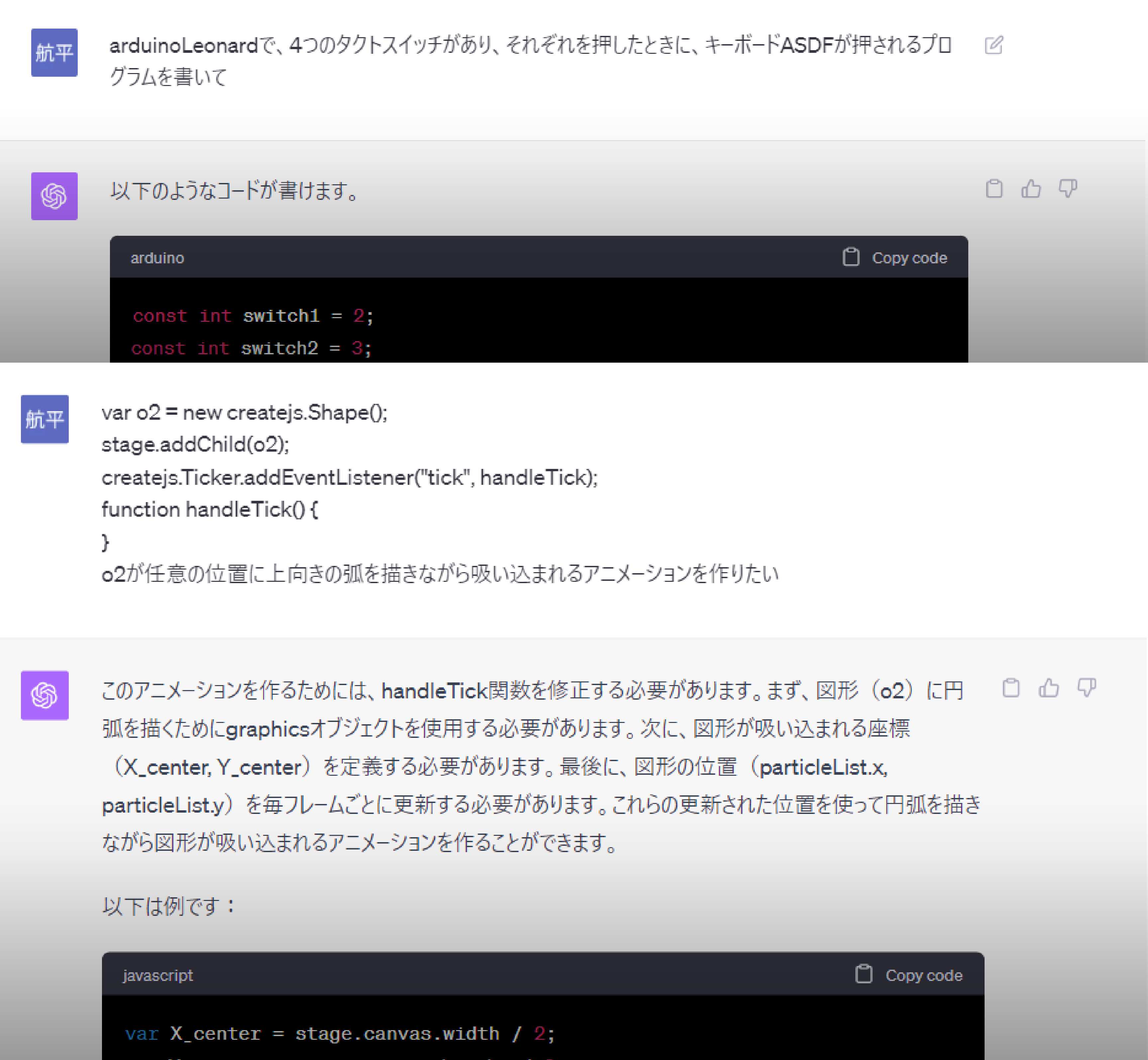
AI Accelerating Designersʼ Realization Capabilities
AIʼs ability to generate from 0 to 1 and connect individual functions was a revelation in implementing features.
In prototyping, not all designers can fully utilize these capabilities.
I personally experienced bitter moments during my student days, writing incomprehensible code to move a single LED or creating poorly made games despite great effort. (Gradually, I learned to balance feasibility and effectiveness...)
Skipping such laborious learning processes to create prototypes and even POCs could be epoch-making for the design industry.
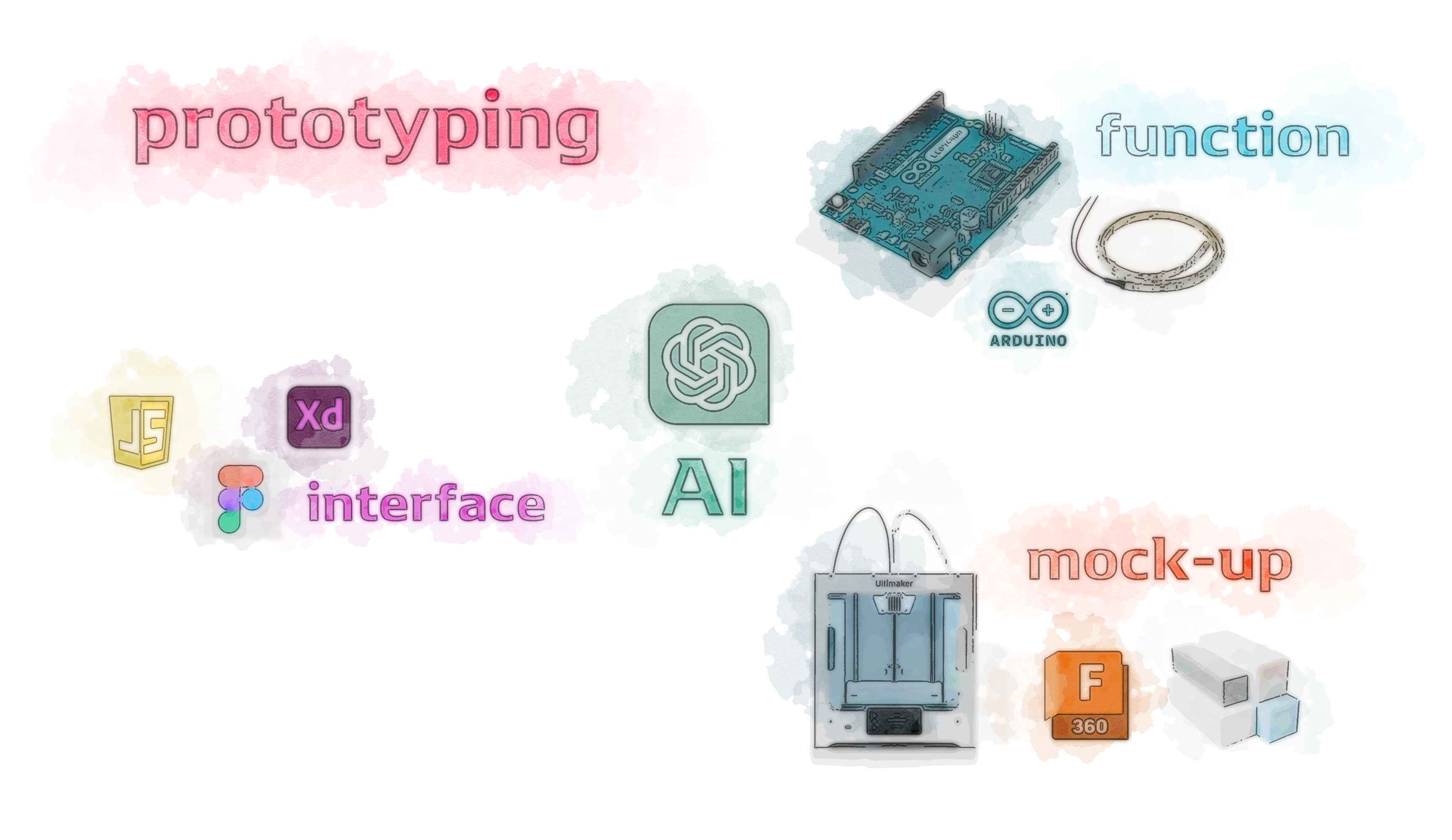
After various twists and turns, and juggling other tasks, the exhibit was completed in three months. During this time, I started asking AI questions whenever I encountered difficulties, significantly saving time and improving feasibility.
For student designers struggling between creativity and realization or professional designers pressed for time to deliver results, AI can be a reliable partner--sometimes an engineer, sometimes a mathematician, sometimes a translator. AI has its pros and cons in creativity, but in terms of proving experiential value, it can greatly accelerate the realization capabilities in design.
Other ActivitiesAll Activities
WorksAll Works

